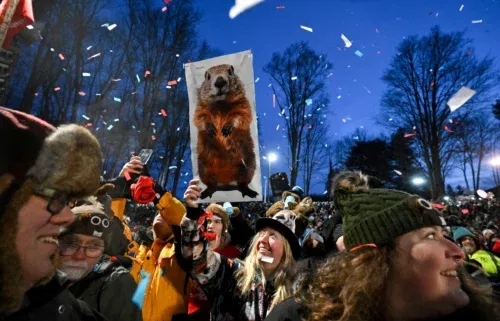A messy week of snowmelt

By Jared Shelton News-Press NOW meteorologist
After 10 days of subfreezing temperatures and several rounds of accumulating snowfall, the wintry landscape across Northwest Missouri and Northeast Kansas has entered a melting phase over the past several days.
While the idea of warmer temperatures and shrinking snowpack is enticing for most, the transition has been a messy one for a number of reasons, mainly due to the large-scale meteorological set-up, which started the thawing process earlier this week.
The latest arctic air mass to linger across the Central Plains and upper Midwest began lifting out of our region on Sunday, replacing single-digit temperatures and bone-dry air with an increasingly mild and moist air mass from the South.
Several inches of snowpack allowed a stubborn layer of near-subfreezing to subfreezing air to persist at the surface, forcing the warmer air mass above it, resulting in what meteorologists call a “warm-nose.” This moist column of air began dropping rain over our area Monday night, which froze on contact with subfreezing surfaces despite air temperatures remaining between 32 and 35 degrees. By Tuesday morning, sidewalks and roads across the St. Joseph area had a patchy glaze of ice, resulting in last-minute school closures due to slippery roadways, a story that was echoed across most of the Show Me State both Monday and Tuesday.
By Tuesday night, air temperatures had risen to the mid-30s, and most area roadways were above freezing as well, making for wet streets rather than snowy and icy ones. This move in the right direction was then replaced by yet another travel hazard, arriving in the form of fog
Once again, the slow melting of snowpack played a role in developing messy travel conditions, as moisture from evaporating snowmelt helped support a thick blanket of fog in addition to the already saturated air mass in place. Fog was most dense across the St. Joseph area late Wednesday night, when visibilities of less than one-quarter mile were reported at Rosecrans Airport and surrounding areas for several hours. Interestingly, the foggy conditions also helped pick up the pace of snowmelt, thanks to small amounts of heat released during the condensation process by which fog is formed.
As of Thursday, much of the recent snowpack has disappeared aside from the larger drifts and roadside piles. If your eyes have grown weary of the dirty snowbanks, know they will soon be a thing of the past, as next week is forecast to bring a true January thaw with 50s and sunshine for several days in a row.




